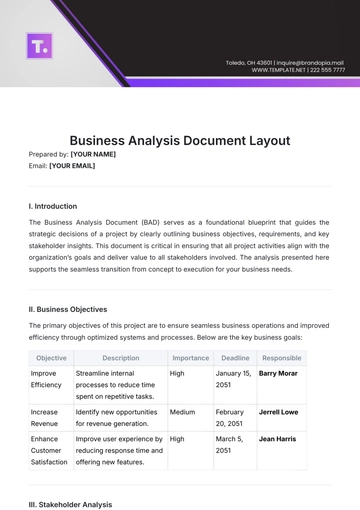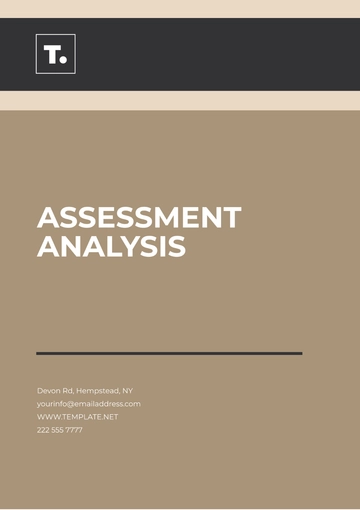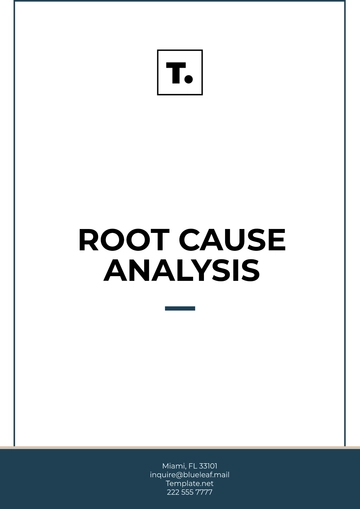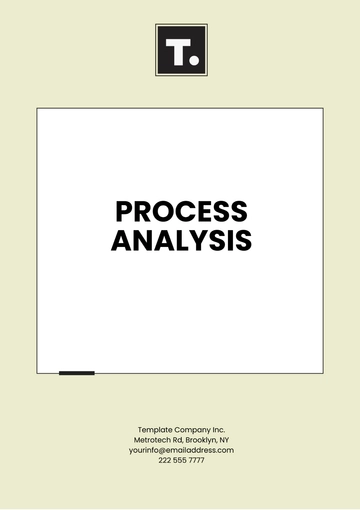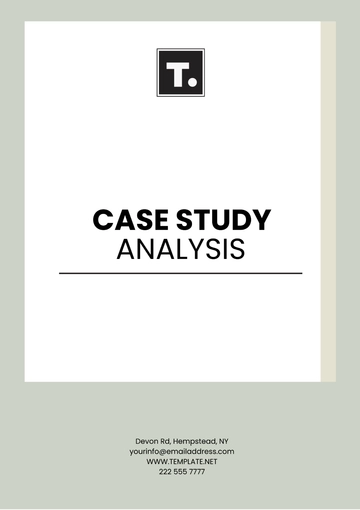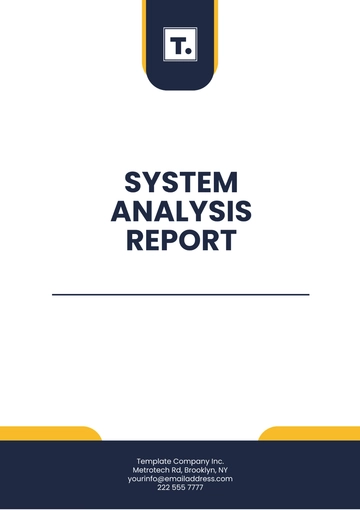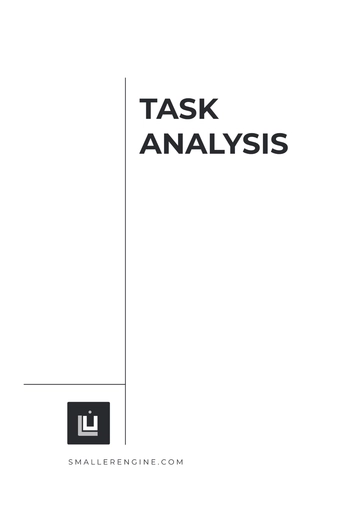Free Administration Strategic Communication Analysis
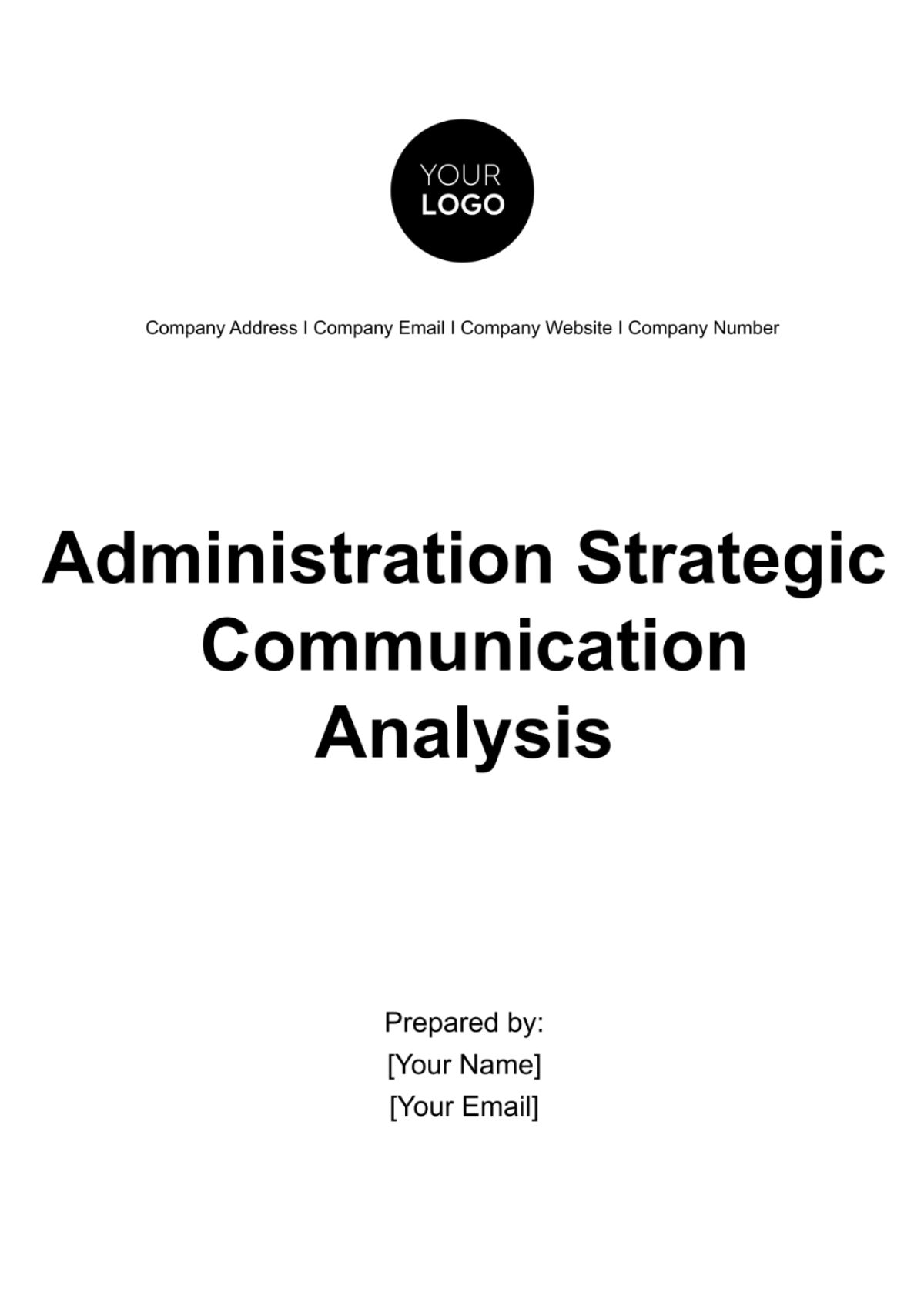
Introduction
In today's business environment, the administration unit stands as the backbone of operational success within any organization. Effective communication within this unit, and between this and other units, is not just beneficial—it's essential for ensuring streamlined operations and achieving the overarching goals of the company. This strategic communication analysis delves into the communication mechanisms currently in place within the administration arm of [Your Company Name], identifying the strengths of these strategies and pinpointing areas ripe for development. The ultimate goal is to evaluate the efficacy of existing communication practices and to forge pathways for enhancing both intra-unit and inter-unit collaboration and understanding.
Methodology
The methodology employed in this strategic communication analysis was designed to be both comprehensive and nuanced, aiming to uncover the multifaceted nature of communication practices within [Your Company Name]'s administration unit. Our approach was grounded in a mixed-methods research design, combining both qualitative and quantitative strategies to gather a broad spectrum of data and insights.
Qualitative Insights
The qualitative component of our analysis centered around in-depth interviews with key members of the administration team. These interviews were structured to explore the intricacies of internal communication processes, the challenges faced, and the perceived effectiveness of existing strategies. The personal experiences and anecdotal evidence collected during these interviews provided valuable context and depth to our understanding of the communication landscape within the unit.
To complement these interviews, we conducted surveys among a wider cross-section of staff within the organization. These surveys were designed to capture a diverse range of perspectives on the administration unit's communication practices, including satisfaction levels, perceived barriers to effective communication, and suggestions for improvement. The anonymity of the survey process encouraged candid feedback, enriching our dataset with honest appraisals of the current communication climate.
Quantitative Analysis
On the quantitative front, our analysis involved a detailed examination of communication artifacts such as emails, meeting minutes, and interdepartmental memos. This review allowed us to quantify the volume, frequency, and types of communication flowing within and out of the administration unit. By analyzing these artifacts, we were able to identify patterns and trends in communication practices, including over-reliance on certain channels and potential bottlenecks in information dissemination.
This dual approach ensured a holistic view of the administrative unit's communication strategies, grounding our findings in both empirical data and the nuanced understandings of those directly involved in the day-to-day communications of the unit.
Key Findings
The culmination of our comprehensive methodology led to several key findings that highlight both the strengths and areas for development within [Your Company Name]'s administration unit's communication strategies.
Email Communication
One of the most significant findings was the heavy reliance on email as the primary medium for information dissemination within the administration unit, accounting for approximately 70% of all communication. While email is a widely accepted and efficient communication tool, its overuse has led to challenges such as information overload, which in turn can dilute the effectiveness of messages and lead to critical information being overlooked or ignored. The saturation of inboxes with both essential and non-essential communications has underscored the need for a more diversified approach to information sharing.
Cross-unit Engagement
Another critical area identified was the gap in communication between the administration unit and other departments within the organization. This disconnect has occasionally led to miscommunications, delays in operational execution, and a general sense of siloed operations. The lack of fluid, cross-unit communication channels has hindered the seamless flow of information and collaboration that is vital for the holistic success of the organization. Improving these cross-departmental communication lines is essential for fostering a more integrated and cooperative working environment.
These findings underscore the generally effective nature of the administration unit's communication strategies while also highlighting significant opportunities for enhancing the efficacy and efficiency of these practices. Addressing the challenges of email communication overload and fostering improved cross-unit engagement stand out as pivotal areas for development. By tackling these issues, [Your Company Name] can streamline its communication processes, enhance operational efficiency, and cultivate a more cohesive and collaborative organizational culture.
Insights from the Data
To further elucidate our findings, the following table provides a snapshot of key insights drawn from our analysis:
Aspect | Insight |
|---|---|
Email Communication | 70% of information is disseminated through emails, which sometimes leads to information overload. |
Cross-unit Engagement | There is a noticeable communication disconnect between administrative and other business departments. |
Email Communication
The data reveals a significant dependency on email for internal communication, which, while efficient for documenting exchanges and reaching wide audiences quickly, has its drawbacks. The saturation of employees' inboxes with a high volume of emails often leads to critical information being lost or ignored. This over-reliance on a single channel for communication underscores the need for a diversified approach to mitigate information overload and ensure key messages are effectively communicated and received.
Strategies for improvement could include the adoption of a more segmented approach to email communication, ensuring messages are targeted and relevant to the recipients. Additionally, leveraging other communication platforms such as instant messaging for real-time discussions and a centralized intranet for company-wide announcements could reduce the reliance on emails and improve the overall communication landscape.
Cross-unit Engagement
The analysis further highlighted a gap in communication effectiveness between the administrative unit and other departments within [Your Company Name]. This gap, characterized by a lack of consistent and open communication channels, often leads to inefficiencies and misunderstandings that can delay decision-making processes and operational execution. The siloed nature of communication not only impacts the fluidity of operations but also affects the organization's ability to function as a cohesive unit.
Improving cross-unit engagement requires a deliberate effort to establish regular, structured communication forums that bring together representatives from different units. These forums can serve as platforms for sharing updates, discussing inter-departmental projects, and addressing any communication barriers. Implementing cross-functional teams for specific projects can also enhance understanding and cooperation between units, breaking down silos and fostering a culture of collaboration.
Moving Forward
Building on these insights, [Your Company Name] is poised to take proactive steps towards revamping its communication framework. By addressing the identified challenges, the organization can enhance the clarity, efficiency, and effectiveness of its communication strategies. This involves not only diversifying the communication tools in use but also fostering an environment where open, cross-unit dialogue is encouraged and facilitated.
The path forward includes a commitment to continuous evaluation and adaptation of communication practices to meet the evolving needs of the organization and its stakeholders. Through targeted initiatives and a strategic approach to communication, [Your Company Name] can ensure that its administration unit not only supports but also drives the company towards achieving its operational and strategic goals.
Actionable Recommendations
In the wake of our comprehensive analysis of the administration unit’s communication strategies at [Your Company Name], several pivotal insights have emerged that highlight both the strengths and areas ripe for enhancement in our current communication framework. To address these findings and propel our communication strategies forward, we have delineated a series of actionable recommendations. These strategies are designed not only to refine the existing communication practices but also to broaden their scope, ensuring that our communication infrastructure is robust, efficient, and inclusive.
1. Diversify Communication Channels
The over-reliance on email as the primary medium for internal communication has been identified as a significant bottleneck, contributing to information saturation and diminishing the impact of critical messages. To counteract this, we recommend a strategic diversification of communication channels within [Your Company Name].
Integration of Instant Messaging Apps: Platforms such as Slack or Microsoft Teams can facilitate real-time conversations, allowing for quicker decision-making and more immediate feedback. These apps also offer features like group chats and channels dedicated to specific topics or projects, enhancing the organization and accessibility of communication.
Development of Intranet Forums: A centralized intranet platform can serve as a hub for company news, updates, and discussions. By creating a space for threaded discussions, employees can engage in dialogues that are easily trackable and referenceable, improving the flow and retention of information.
Utilization of Project Management Tools: Tools like Asana, Trello, or Monday.com can streamline project communications, centralize task assignments, and track progress. By consolidating project-related discussions and updates in one place, these tools can significantly reduce the clutter in employees’ inboxes and improve project visibility across teams.
2. Regular Inter-departmental Meetings
To bridge the communication gap between the administration unit and other departments, establishing a regular cadence of inter-departmental meetings is crucial. These meetings will not only facilitate direct dialogue but also foster a culture of transparency and collaboration across the organization.
Scheduled Cross-Unit Sessions: Regularly scheduled meetings, whether monthly or quarterly, should bring together representatives from various departments to discuss ongoing projects, share updates, and address any challenges. These sessions can be themed around specific strategic goals or operational priorities to maintain focus and relevance.
Ad-hoc Collaborative Workshops: Beyond regular meetings, ad-hoc workshops or brainstorming sessions can be organized to tackle specific issues or innovate solutions collaboratively. These workshops can serve as platforms for cross-pollination of ideas and strengthening inter-departmental relationships.
3. Periodic Communication Training
To ensure that all employees, regardless of their role or department, possess the necessary skills to communicate effectively, ongoing training programs focused on communication best practices are imperative.
Comprehensive Communication Skills Workshops: These workshops should cover a range of topics, including but not limited to, effective email writing, active listening, presentation skills, and non-verbal communication. Tailoring content to address the specific needs and challenges identified through our analysis will make these workshops particularly impactful.
Best Practices and Tools Training: Specific sessions dedicated to training employees on the optimal use of the diversified communication tools and platforms can enhance adoption rates and ensure that these tools are utilized to their fullest potential.
Feedback and Continuous Improvement Sessions: Encouraging a culture of feedback, these training programs should also include components that allow employees to express their communication challenges and successes. This feedback mechanism will enable continuous refinement of the training content and methods.
Conclusion
The implementation of these recommendations necessitates a structured approach, beginning with pilot programs to test the feasibility and impact of the proposed changes. Feedback gathered during these pilot phases will be invaluable in adjusting and scaling the initiatives across [Your Company Name].
Furthermore, leadership buy-in and support are critical to the success of these recommendations. Leaders within the organization should champion these changes, demonstrating their commitment through active participation and advocacy.
By adopting these actionable recommendations, [Your Company Name] is poised to significantly enhance its communication strategies, fostering a more connected, efficient, and collaborative workplace. As we move forward, regular evaluation of the impact of these changes will be essential in ensuring that our communication strategies continue to meet the evolving needs of our organization and its stakeholders.
For more information, reach out to [Your Company Name]'s representative through these details:
[Your Name]
[Your Email]
[Your Company Name]
[Your Company Email]
[Your Company Address]
[Your Company Number]
[Your Company Website]
[Your Company Social Media]
- 100% Customizable, free editor
- Access 1 Million+ Templates, photo’s & graphics
- Download or share as a template
- Click and replace photos, graphics, text, backgrounds
- Resize, crop, AI write & more
- Access advanced editor
Gain invaluable insights and enhance your strategic communication efforts with Template.net's Administration Strategic Communication Analysis Template. Our AI editor tool empowers you to customize and analyze communication strategies with ease. Identify strengths, weaknesses, and opportunities to refine your approach effectively. Elevate your administration with data-driven decision-making and achieve communication excellence effortlessly.




